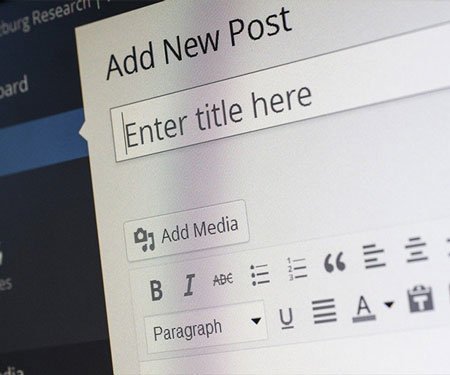
It’s essential to be aware of the common mistakes that most small business websites make so you can turn yours into a reliable customer-conversion machine. Read on to learn what these mistakes are and how to avoid them.
Bad Website Design
When choosing a website template, you will encounter some pretty cool designs with large sliding images, interactive features, artsy elements, and exciting color combinations. They are all fun and can make your website eye-catching. However, not all these things are suited to your website.
Rather than choosing a website template that contains too many eye-catching elements, we recommend selecting a clean, responsive design instead. A minimalistic design will encourage your visitors to focus their attention squarely on your products or services and go through your conversion funnel. While extra website elements can be fun to look at, they tend to pull your visitor’s attention away from being converted into customers.
You must also make sure that your top-level navigation tells visitors where your essential information is. Avoid too many main navigation items and dropdowns as it makes it too hard for visitors to find the information they need.
If your website has several pages that contain one paragraph of text, we suggest merging them into one page, if possible. For example, you can put your business’ philosophy and mission all in your about page to avoid cluttering your navigation.
Using Poor-Quality Images
Using grainy, poor quality photos on your site can affect your business negatively as it can make your business look unprofessional. We recommend hiring a photographer who can take professional photos of your business, products, or the services you provide.
Alternatively, you can grab relevant stock photos from several websites, including depositphotos.com. If you are on a budget, your best option is to use photos from free stock photo sites like Pixabay and Unsplash. You can also take great photos straight from your smartphone if you have the skills in photography.
Posting Mediocre Website Content

Too Much Text
According to research, website visitors typically stay on a web page for only fifteen seconds or less. That’s not enough time to get your message across, so you must concisely present your information. You can do this in a couple of paragraphs. If you want to give more details, we suggest that you put it in a blog post instead of your website pages.
Long Text
Your visitors prefer “bite-sized” pieces of information instead of large blocks of text. Use short paragraphs, bullets, and add a few relevant images throughout to hold your reader’s attention and allow them to browse your information easily.
Unnecessary Jargon
While those in your industry may comprehend industry-specific terminology, your audience probably wouldn’t so write your message clearly by using simple terms.
Grammar and Spelling Errors
Your visitors see your website as a direct reflection of the way you do business, so if your site has errors, your visitors will consider your business to be unprofessional. If you are writing your website content, it will help to have another person to look at your finished product and catch any errors you may have missed before you publish it. Grammarly is a free tool you can use to help you with grammar and spelling errors.
Self-Centered Content
Make sure that your content reflects how you value your customers. Rather than using “I” or “we” in your statements, write about how your products or services can help your customer. For example, instead of saying, “I create stunning websites,” try “Learn how to get a stunning website that attracts customers.” If writing comes as a challenge for you, consider sourcing this job out to a freelancer or the copywriter at your web design firm. It may cost you more, but it will help you generate more leads from your website in the long run.
Insufficient Text
If your website only contains a couple of sentences per page, you are shortchanging yourself in many ways. First, search engines do not like a website with minimal content, which means it won’t rank well in search results. Second, if your website contains insufficient information, visitors will likely not find all the information they need and will cause them to head over to your competitor’s site.
Forgetting Your Call-To-Action
Is the goal of your website to have visitors sign up for a service, fill out a form for a quote, give you a call, or purchase a product? With your existing website, will it be easy for your visitors to take that action? If your answer is no, you are missing out on the opportunity to gain customers.
So whatever your goal, make sure you offer your visitors an easy way to go through your conversion funnel. Here are some tips to consider regarding your call to action:
- Add buttons to your website that tells readers what to do like “Get a Free Quote,” “Contact Us,” or “Buy Now.”
- At the bottom of your web pages, add a paragraph encouraging visitors to take action, with a link within the text to do so.
- Make sure your call to action is easily visible. For instance, include a button in your header so your visitors can see it from any page of your site.

Not Updating Your Website
After adding great content, images, and call to action to your website, make sure to keep it up to date so that potential and current customers know what you are offering, where your business is located, and what days and hours you operate.
It can be frustrating to check the business hours on a website but find the place closed, so make sure to update all your business information, including your address, phone numbers, email addresses, and other contact information.
So now you know what mistakes to avoid on your small business website. If you need help with designing a website that will bring in more online leads for your business, or if you need content that will provide relevant information to your visitors, Agile Development is here to help! Get in touch with us at https://agiledev.org/contact/ to request for a free quote or to learn more about our expert web design services.
Recent Comments